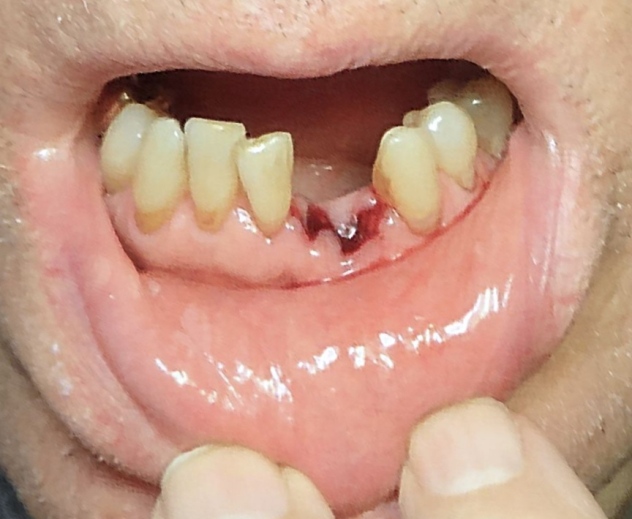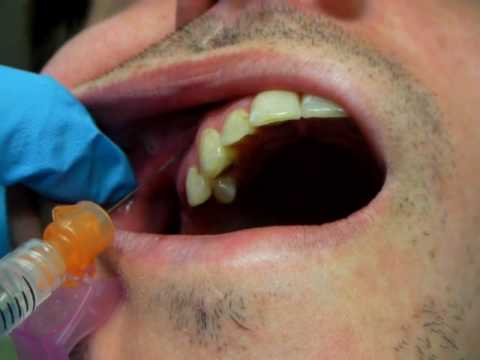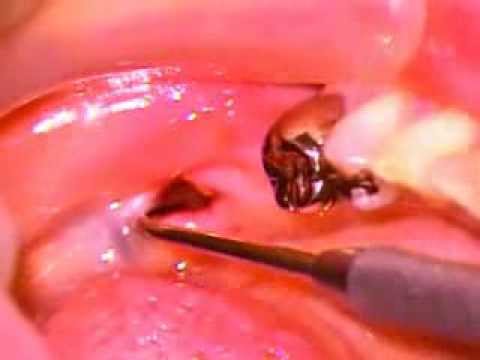Wisdom teeth, or third molars, extractions are seen more often than any other teeth. After extraction, several complications may occur, and dry socket is one of them. Dry socket, is also known as alveolar osteitis, is a painful dental problem. A very small percentage of about 2% to 5% of people develop dry socket after a tooth extraction. Though, dry socket can be uncomfortable but fortunately it is easily treatable.
After extraction, a blood clot forms in the tooth socket, and seals the area so that it can heal. A dry socket occurs when the blood clot breaks down or is dislodged, exposing the bone and nerves. Initial 3-4 days after extraction are the most critical, and during this time risk for a dry socket is highest. Generally, a dry socket is a result of bacterial, chemical, mechanical, and physiologic factors. Preexisting infection prior to a dental extraction such as periodontal disease can put off proper formation of a blood clot. Certain oral bacteria can cause the breakdown of the clot.
Nicotine used by smokers cause a reduce blood supply in the mouth. As a result, the blood clot may fail to form at the site of tooth extraction.Aggressive rinsing, spitting, Sucking through a straw, or dragging on a cigarette may result dislodgement and loss of the blood clot. Dense jawbone, Hormones, or poor blood supply are also the factors that prevent blood clot formation.

Dry Socket Symptoms after Tooth Extraction
Dry socket symptoms may appear in 3-4 days after extraction and those who develop dry socket may experience the following symptoms:
- Moderate to Severe pain that last for around 10 to 40 days after extraction.
- Partial or total loss of the blood clot at the tooth extraction site
- Visible bone in the socket
- Swollen lymph nodes around the jaw
- Slight fever
- Throbbing pain that extends to ear, eye and temples
- Bad breath
- Bitter or unpleasant taste in mouth
Dry Socket Pictures

Toot extraction itself is a very painful process, no doubt but it becomes more painful when it brings further complications with it.

A blood clot that forms after tooth extraction can leads towards dry sockets.

Ice cubes are helpful in many ways and they are also used as a home remedy to reduce the pain and swelling caused by dry sockets.

Clove oil is considered best in terms of all problems related to teeth.
Dry Sockets Treatment
After tooth extraction the dentist may prescribe painkiller to ease the discomfort. The dentist will clean the tooth socket, headgear braces and remove any debris from the hole, and then fill the socket with a medicated gauze or a special paste to endorse healing.Dentist may recommend antibiotics to prevent the socket from becoming infected. The dentist may advise you what to eat or drink as well as how to clean and care for the dry socket area.
To care for the dry socket at home, your dentist may recommend that you rinse with salt water or a special mouthwash every day. With proper care and rest, the dry socket heals in seven to 10 days. The dentist will probably ask to schedule a follow up appointment to examine healing.
Dry Socket Home Remedies
In case of developing dry socket it is essential to get treated to reduce pain and discomfort. Dentist instructions along with home remedies help to promote healing and reduce symptoms. Below are some home treatment choices that help to manage the complications of dry socke.
Pain killer
Though pain killers not help the wound heal or prevent infection, it will help you deal with pain related with a dry socket.
Ice Pack
Pain in the jaw and cheek is common among those suffering from dry socket. A cold compress or using ice pack on the dry socket is a tested remedy that can be used at home to alleviate pain and swelling.
Salt water rinse
Rinsing mouth with warm saline water removes debris; helps soothe inflammation and prevent any infection.
Avoid using tobacco products
Smoking may cause a blood clot to dislodged, and passing smoke over the socket may further irritate the wound and prolong pain and inflammation.
Clove Oil
Clove oil has proved to be an effective treatment for dry socket. It can be applied directly on the dry socket with the cotton swab. To reduce the tingle of clove, first soak the cotton ball in the water then, dip it in the clove oil and then apply it on the dry socket. Apply it once or twice a day.
The above mentioned home treatments will surely help in alleviating the dry socket discomforts. A certain degree of pain and discomfort is normal after a tooth extraction. But if you feel aggravation in pain after tooth extraction, contact your dentist immediately.


